MEDIA FOR CHANGE NETWORK
Uganda: StopEACOP Campaign Condemns Standard Bank’s Decision to Fund EACOP
Published
1 year agoon
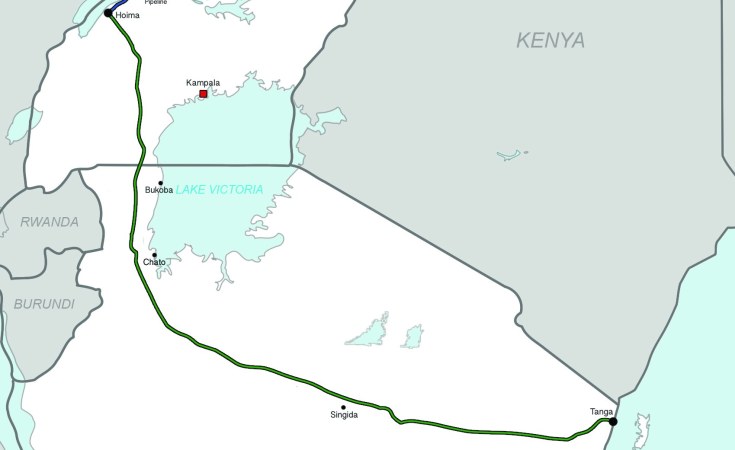
Kampala — The StopEACOP Campaign is appalled by Standard Bank’s decision to help finance the East African Crude Oil Pipeline (EACOP) project and condemns this decision in the strongest possible terms. This decision follows a years-long review process, during which environmental and social concerns raised by numerous stakeholders were evidently ignored.
The $5 billion EACOP project, spearheaded by TotalEnergies, aims to transport crude oil from Uganda’s oil fields to a terminal in Tanga, Tanzania. Despite significant opposition from affected communities and environmental and human rights groups, Standard Bank, Africa’s largest lender, has decided to support this disastrous project.
Standard Bank chair Nonkululeko Nyembezi stated in a recent interview that they had conducted comprehensive environmental and social due diligence. However, the claim contradicts the project’s grave climate, environmental and human rights risks. The decision of Standard Bank is also at odds with the assessment of its peers, who have ruled out support for the EACOP for climate, environmental, and social concerns.
Standard Bank’s decision ignores local opposition and human rights abuses
In the last month alone, 11 pipeline critics have been arrested in Uganda and Tanzania after expressing their concerns about the project. In addition, one of the community leaders from the Kingfisher region in Uganda was abducted by the Uganda Peoples’ Defense Forces, bringing condemnation from the UN Special Rapporteur on Human Rights Defenders. Standard Bank’s untimely announcement of their decision to finance EACOP, in the midst of a brutal crackdown on human rights, environmental and land defenders in Uganda and Tanzania, illustrates their level of detachment from the realities and experiences of communities on the ground and calls into question their claim to have done thorough due diligence.
Environmental and human rights groups have persistently highlighted the potential hazards of the controversial EACOP, including severe impacts on wildlife habitats, the displacement of communities, and the exacerbation of climate change through increased greenhouse gas emissions. Many field investigation reports, including a recent Human Rights Watch report, have also documented and denounced the inadequate compensation and significant disruption experienced by residents displaced by the pipeline’s construction. Against this backdrop, Standard Bank’s decision to finance EACOP shows blatant disregard for the voices and rights of the communities in Uganda and Tanzania who will bear the brunt of the environmental and social devastation caused by this project.
Standard Bank cannot feign ignorance in relation to the concerns surrounding EACOP. It has faced consistent pressure from communities and climate and social justice organisations and groups in South Africa who have demonstrated outside the bank’s offices in Rosebank, Johannesburg on numerous occasions. These demonstrations, including a large protest with hundreds of participants on the day of the bank’s AGM in 2023, a 3-day-long occupation of the bank’s entrance in September of the same year, and weekly pickets held outside the bank’s parking lot by Extinction Rebellion, sought to bring the demands and experiences of EACOP-affected communities to their attention.
Standard Bank has refused to engage in meaningful and constructive dialogue and instead, its response has been characterized by repression and increased militarisation. The South African Police Service has also intervened to protect the interests of the bank and has arrested peaceful demonstrators on two occasions. It is a stark demonstration of Standard Bank’s prioritization of profit over people and the planet and its lip-service commitment to constructive dialogue and meaningful engagement with frontline communities and other key stakeholders.
Standard Bank is also ignoring clear business risk
The decision to bankroll the project also casts doubt on Standard Bank’s assessment of the business and reputational risks stemming from the risks to local communities, environment and climate posed by the project.
Standard Bank’s decision comes after major financiers and insurers from North America, Europe, and Japan have publicly ruled out support for EACOP due to global outcry over the harmful project. The expected finance from China has also been delayed, while the Chinese state-owned insurers and banks have taken prolonged time to assess the outstanding risks. As a result, the EACOP project is facing significant challenges and project sponsors are reportedly in a cash crisis to fill the funding gap, which threatens to stall the construction.
These delays come as a result of the immense pressure that potential financiers have come under from communities, civil society, the international community and even shareholders and investor groups who express grave concern over the catastrophic socio-economic, biodiversity and climate change risks of the project.
Standard Bank’s decision to finance the EACOP project starkly contradicts industry trends, as leading banks and insurers have distanced themselves from this controversial initiative. This decision exposes Standard Bank to significant risks, including the potential for stranded assets, especially as the global economy transitions towards clean energy solutions. Furthermore, with Uganda already facing a severe debt crisis, worsened by the country’s oil induced borrowing spree, the environmental and social costs associated with EACOP could precipitate an economic disaster for the people of Uganda as well as financiers and their shareholders who opt to engage with this project.
It is clear that investing in EACOP threatens the stability of vulnerable communities and jeopardizes the financial health and reputational integrity of those who support it. A 2022 report assessing the EACOP and associated oil fields against internationally recognized environmental and human rights standards for financial institutions found numerous violations, putting banks at risk if they sign on to support the project. The assessment, undertaken by the Africa Institute for Energy Governance (AFIEGO), Inclusive Development International (IDI) and BankTrack, suggests that the project is not in compliance with many of the criteria set forth in the Equator Principles and the Environmental and Social Performance Standards of the International Finance Corporation (IFC), two internationally recognized standards for responsible finance.
We demand that Standard Bank review and rescind its decision to finance the EACOP project immediately. While it may be too late for Standard Bank to redeem its supposed commitment to people and the planet, there is still time for other potential lenders, particularly Chinese state-owned banks, to demonstrate their dedication to human rights and sustainability by refusing to support EACOP. We call upon the global community to continue its unwavering support for the StopEACOP campaign and the communities on the frontlines. It is not too late to halt this disastrous project and prevent the extensive environmental, social, and economic damage it promises to inflict.
Quotes
“For years, we have campaigned tirelessly against Standard Bank, bringing the grievances and aspirations of impacted communities directly to their doorstep time and time again. Each time, we are met either with deafening silence or with outright violence from an institution that has shown itself to be truly heartless and utterly indifferent to the well-being of ordinary people. Let it be known that this announcement will not deter us. We will continue to stand in solidarity with the communities affected by EACOP and will escalate our actions against Standard Bank in the coming months.” – Zaki Mamdoo, StopEACOP Campaign Coordinator
“Standard Bank prides itself on financing Africa’s development. However, the bank’s decision to finance the EACOP, not to mention its financing of other fossil fuel projects across Africa, earns the institution the title of an anti-people and an anti-development bank. Fossil fuel projects like EACOP that cause livelihood losses, enslave Ugandans by worsening indebtedness and drive all of us deeper into the climate crisis should not be financed by any bank.” – Diana Nabiruma, Senior Communications Officer, AFIEGO
“Standard Bank is contributing to the devastation of our communities including through the immense loss of land and livelihood. They have chosen to ignore the plight of our people and to support our exploitation and suffering at the hands of greedy multinational corporations. This is a decision that places them squarely on the wrong side of history and which marks them as an institution with no regard for human rights and justice.” – Richard Senkondo, Executive Director at the Organization for Community Engagement, Tanzania.
Original Source:350Africa.org Via allafrica.com
Related posts:
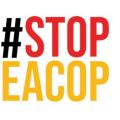
 A 29th Insurance Company withdraws support for controversial EACOP Project.
A 29th Insurance Company withdraws support for controversial EACOP Project.
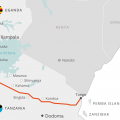 CSOs to African Development Bank: Don’t fund EACOP
CSOs to African Development Bank: Don’t fund EACOP
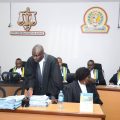 The East Africa regional court dismisses a case challenging the construction of the EACOP project.
The East Africa regional court dismisses a case challenging the construction of the EACOP project.
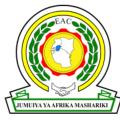 Appellate Division of the East African Court of Justice (EACJ) to hear an Appeal filed by CSOs which seeks to reinstate a petition against the construction of the EACOP project tomorrow.
Appellate Division of the East African Court of Justice (EACJ) to hear an Appeal filed by CSOs which seeks to reinstate a petition against the construction of the EACOP project tomorrow.
You may like
MEDIA FOR CHANGE NETWORK
Seed Sovereignty: Most existing and emerging laws and policies on seeds are endangering seed saving and conservation on the African continent.
Published
2 days agoon
November 11, 2025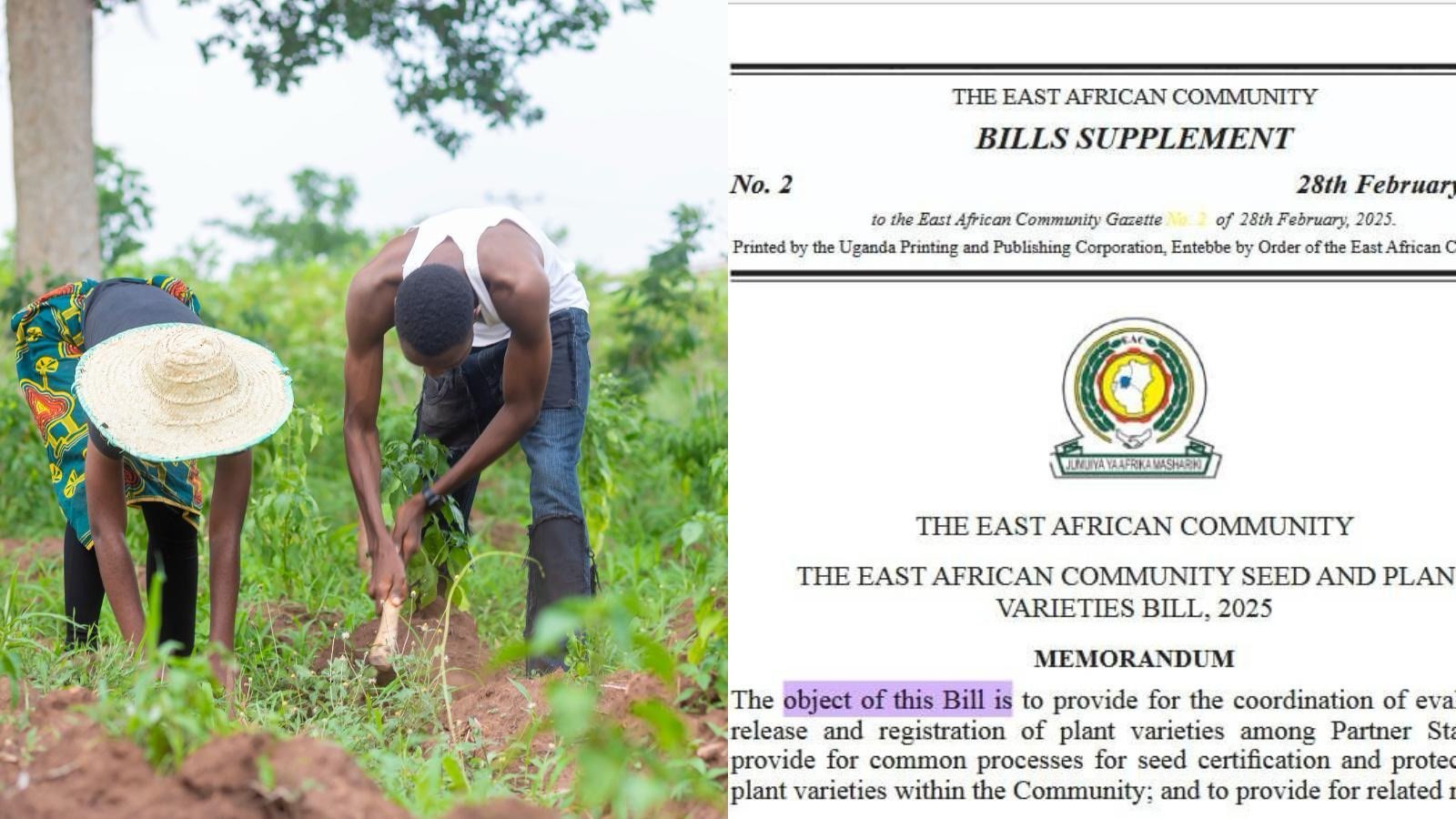
By the Witness Radio team
In Africa, farmers and civil society organizations are urgently warning about the adverse effects of existing policies on agrobiodiversity. These policies aim to erode centuries-old traditions of seed saving and exchange, effectively undermining seed sovereignty and intensifying dependency on commercial seed companies.
The struggle over seed sovereignty, particularly the rights of smallholder farmers, has become one of the most pressing issues for the continent’s agricultural future. As governments introduce new seed laws, such as the proposed East African Seed and Plant Varieties Act Bill of 2024, the preservation of cultural seeds and the rights of smallholder farmers are at stake.
The Communications and Advocacy Officer at Kenya’s Seed Savers Network, Tabitha Munyeri, notes that this has heightened monoculture, thereby significantly reducing the focus on indigenous plant varieties.
“There’s a lot of loss of agrobiodiversity with people focussing on a few foods, a few crops, leaving out so many other essential crops that have sustained humankind for generations and it is also important because it is coming at a time where we are having a lot of also conversations around different seed laws that are coming up for example within the EAC we see that there is the seed and plant varieties bill of 2024 and we are looking at it as a huge setback and there is need for us to create awareness around even the policies that exist.”
She further argues that there is a need to raise awareness and sensitise farmers to the existing policies so that they can understand their effects on agrobiodiversity.
“Even for Kenya we have been having punitive seed laws for the longest time but now we are happy that courts of law are reviewing the law, but we still think that there is need to create a lot of advocacy around the seed laws and what they really mean to farmers because some of them do not understand, some of them are not even interested but once they get to know what it means and the impacts that the laws have on them then they are also able to become more vocal and more involved in the process.” She says.
Farmers in Africa have been the custodians of agricultural biodiversity, developing and maintaining numerous varieties of crops that are suited to local soils and climates. However, over the last few decades, the focus on farming has drastically declined to a handful of “high-yield” crops and imported hybrid varieties, leaving out the diverse indigenous seeds that have sustained communities through droughts, pests, and diseases.
Munyeri warns that this decline in agrobiodiversity is accelerating, driven not merely by market pressures, but by restrictive laws that criminalise and discourage traditional seed-saving practices.
In Kenya, where smallholder farmers supply more than 80 percent of the country’s food, seed systems have long depended on the informal exchange of seeds within communities. Small-hold farmers have relied on these systems to share, adapt, and innovate with seeds suited to their local conditions. However, existing laws have tended to favour the formal sector, requiring seed certification, variety registration, and compliance with intellectual property protections that most small-scale farmers cannot afford.
The 2024 Seed and Plant Varieties Act Bill, currently under discussion in several East African countries, has sparked significant controversy. It seeks to modernize agriculture and align national systems with international standards. However, smallholder farmers and critics contend that it allows corporate control over genetic resources, limiting farmers’ autonomy and threatening biodiversity. Under such a framework, only registered seed varieties can be legally traded or exchanged, effectively outlawing the informal seed networks that have sustained rural communities for centuries.
If smallholder farmers lose their rights to exchange and cultivate indigenous varieties, they may also lose control over their food systems. Dependence on improved seeds necessitates purchasing new stock each planting season, eroding self-reliance and increasing vulnerability to market fluctuations.
This awareness gap is what the Seed Savers Network hopes to address. Through training programs and advocacy initiatives, including its recently concluded regional boot camp, the organization equips participants from across Africa with knowledge about seed laws, biodiversity, and policy engagement.
Related posts:
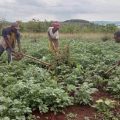
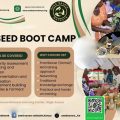 Seed Boot Camp: A struggle to conserve local and indigenous seeds from extinction.
Seed Boot Camp: A struggle to conserve local and indigenous seeds from extinction.
 The EAC Seed & Plant Varieties Bill, 2025, is a potential threat to smallholder farmers, as it aims to disengage them from the agriculture business, according to experts.
The EAC Seed & Plant Varieties Bill, 2025, is a potential threat to smallholder farmers, as it aims to disengage them from the agriculture business, according to experts.
 CSOs and Smallholder farmers are urgently convening to scrutinize the EAC Seed & Plant Varieties Bill, 2025.
CSOs and Smallholder farmers are urgently convening to scrutinize the EAC Seed & Plant Varieties Bill, 2025.
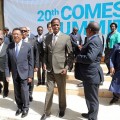 African governments are giving in to corporate pressure and undermining local seed systems – report
African governments are giving in to corporate pressure and undermining local seed systems – report
MEDIA FOR CHANGE NETWORK
Lands ministry rejects call to save over 300 Masaka residents facing eviction
Published
1 week agoon
November 5, 2025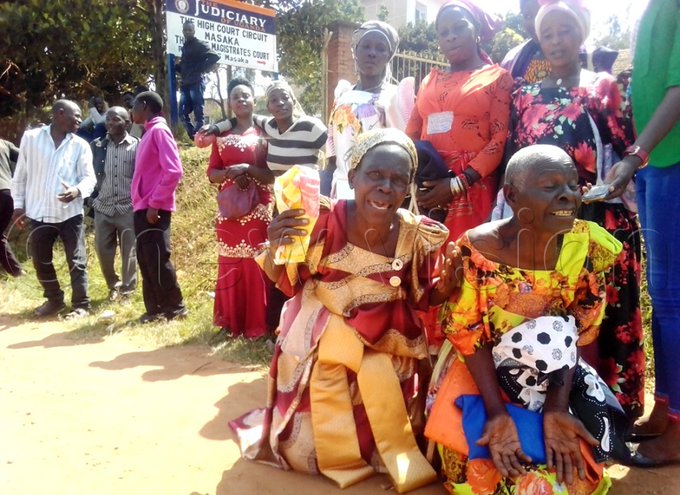
Over 300 families now face displacement, with the landlords’ legal team, Solis Advocates, having served eviction notices in 2021. (Credit: Dismus Buregyeya)
Lands state minister Joseph Mayanja and Minister Judith Nabakoba ruled out further administrative intervention, citing a 2019 court ruling that declared the residents had encroached on land owned by Masaka Jaggery Mills Ltd.
Lands state minister Joseph Mayanja and Minister Judith Nabakoba ruled out further administrative intervention, citing a 2019 court ruling that declared the residents had encroached on land owned by Masaka Jaggery Mills Ltd.The conflict stems from a 2019 ruling by Masaka chief magistrate Deo Ssejjemba, which sided with landlords Joseph Matovu and Methodius Kasujja in their eviction bid against the locals.
The court’s decision, upheld after residents withdrew an appeal in 2021, set the stage for the current standoff.
Despite this, the affected families, many of whom lost homes, crops, and plantations, petitioned the President in 2021, prompting former Vice-President Edward Ssekandi and the State House legal teams to intervene.
However, Mayanja emphasised that all avenues for mediation had been exhausted.
“The matter has been conclusively resolved through legal and administrative processes. No further interventions are justified,” he stated in a letter dated October 28, 2025, rejecting a last-minute plea for a site visit.
Unresolved
Nabakoba confirmed that 105 families received compensation between shillings 300,000 and 12 million from the landlords in 2021 after signing agreements.
However, a ministry report revealed 215 families remain uncompensated, pending verification of their claims.
“We closed the mediation process when the majority accepted the settlement,” Nabakoba said. However, locals like Vincent Mugerwa, leader of the Kasanje Bibanja Owners Association, denounced the payouts as “peanuts,” citing offers as low as shillings 800,000 per acre.
The dispute has drawn high-level attention, including from legislator Joanita Namutawe, who petitioned Parliament, and Prime Minister Robina Nabanja, who met with security officials in Masaka last week. Despite these efforts, the lands ministry insists the case is closed.
Residents, however, contest the land’s ownership history, alleging irregularities in transfers from the original owners, the Masaka Jaggery Mills, to current landlords. Title documents show the land was registered under Freehold Volume 59 Folio 11, transferred to Joseph Bukenya in 2021, before passing to Methodius Kasujja.
Facing eviction
Over 300 families now face displacement, with the landlords’ legal team, Solis Advocates, having served eviction notices in 2021.
The Prime Minister’s office received a fresh petition on October 31, detailing the residents’ grievances, including destroyed property and inadequate compensation.
Original Source: New Vision
Related posts:
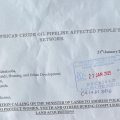
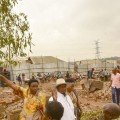 Outcry as Court Orders Eviction of 500 Families in Masaka
Outcry as Court Orders Eviction of 500 Families in Masaka
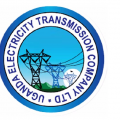 Electricity Transmission Company holds titles in Masaka as residents point to foul play
Electricity Transmission Company holds titles in Masaka as residents point to foul play
 Residents in Nakaseke district woke up to eviction notice amid COVID-19 lock-down land eviction directives.
Residents in Nakaseke district woke up to eviction notice amid COVID-19 lock-down land eviction directives.
 Uganda’s top Lands Ministry official has been arrested and charged with Corruption and Abuse of Office, a significant event that will have far-reaching implications for land governance in the country.
Uganda’s top Lands Ministry official has been arrested and charged with Corruption and Abuse of Office, a significant event that will have far-reaching implications for land governance in the country.
MEDIA FOR CHANGE NETWORK
Report reveals ongoing Human Rights Abuses and environmental destruction by the Chinese oil company CNOOC
Published
1 week agoon
November 3, 2025
By Witness Radio team.
Three years into the Kingfisher oil and gas extraction project, the situation in Kikuube District is dire. Despite repeated warnings and criticism from human rights and environmental organizations, the impact on the local population remains intolerable.
In 2024, the Environment Governance Institute Uganda (EGI) and Climate Rights International (CRI) independently published reports on the Kingfisher oil production project. A year later, in September 2025, these two influential organizations united their efforts to produce a follow-up report, which revealed even more alarming results.
The report titled “Extortion, Coercion, and Impoverishment. Human Rights Abuses and Governance Failures in the China National Offshore Oil Corporation’s (CNOOC) Kingfisher Oil and Gas Project” paints a grim picture. It shows that the hardships and abuses faced by residents of the China National Offshore Oil Corporation (CNOOC) Uganda Ltd. are not isolated incidents, but an ongoing series of violations.
Alongside the larger Tilenga project and the East African Crude Oil Pipeline (EACOP), the Kingfisher project is a crucial component of the extensive fossil fuel extraction operation in Uganda, which has been ongoing since 2017. The most important players involved are the French company TotalEnergies, the Tanzania Petroleum Development Corporation (TPDC), the Uganda National Oil Company (UNOC), and the Chinese energy giant CNOOC. While a subsidiary of TotalEnergies is implementing the Tilenga project, CNOOC serves as the executing partner for the Kingfisher project.
Last year’s reports demonstrated the immense environmental damage caused by the Kingfisher project. The Climate Accountability Institute predicted that the entire Ugandan oil production project would increase the country’s emissions. All of the projects will contribute significantly to global warming and, like all new fossil fuel extraction projects, are incompatible with the Paris Agreement’s 1.5 °C warming target.
In Kikuube district, oil drilling activities along the Lake Albert shoreline have allegedly resulted in the demolition of vegetation, increased sediment runoff, and chemical leaks over the last year, leading to the loss of breeding grounds for the local fish population, which is the basis of the livelihood for most local communities. Moreover, visible water pollution is an increasing threat to public health, as the lake is the only available water source for many residents.
Most households in villages bordering the project lack the funds to afford clean water or even medication, as they are experiencing a severe loss of income. Access to the area surrounding the project, including Nsonga, Nsuzu A, Nsuzu B, Kiina, and other nearby villages, is tightly controlled by security forces, like the Counter-Terrorism Police, the regular Traffic Police, and joint UPDF and Saracen Private Security company patrols. These enforce unannounced daily curfews by threatening and beating villagers encountered out of their homes after 6 or 7 pm, which results in a decrease in earnings for street vendors, whose main trading hours are often in the evening.
Fishing and fish trading – the primary sources of employment in the area – are also suffering greatly from the situation controlled by the company. Every two weeks, fishermen are required to pay 200,000 UGX in fishing fees. Fish traders – most of whom are women or youth – also must pay fees for their goods when passing through security checkpoints, which they often cannot afford. None of these fees levied by the security forces are receipted or even explained.
In addition to the physical restrictions, there is the ongoing loss of land. The company continues to take over communal land in the communities, forcibly evicting former residents without compensation.
Violent attacks for non-compliance with the new rules and fees are not uncommon and violate international human rights laws. In addition, there has been a disturbing increase in sexual and gender-based exploitation and abuse towards particularly vulnerable women. Many lose their sources of income due to the changed conditions and are forced into prostitution. The result is an increase in teenage pregnancies and school dropouts.
While the entire oil production project has been repeatedly criticized for human rights violations and illegal evictions, CNOOC’s actions are particularly egregious. Unlike other comparable projects, the company has never published a Resettlement Action Plan (RAP) setting out compensation requirements and plans for restoring livelihoods. However, this is a necessary measure according to Ugandan and international standards. Although CNOOC has officially committed to developing an accessible grievance mechanism for community members, the residents interviewed for the report are not aware of any such mechanism.
Although arbitrary violence and sexual assaults against women have decreased since a new commanding officer of the local Uganda Peoples’ Defense Forces (UPDF) was appointed, restrictive military control over the area and its inhabitants remains oppressive. Even under the new commander, Mubingwa Moses, residents continue to be restricted in their traditional way of life and work by opaque rules. The systematically imposed fees further exacerbate the situation of those affected and can only be described as exploitation.
The report by EGI and CRI makes a fundamental demand: “Uganda’s oil development is perpetuating climate, environmental, and human rights harms in violation of both national and international law and should be discontinued”. Furthermore, it explains in detail what is specifically needed to change the situation for those affected. The demands include conducting an independent and transparent investigation into the documented human rights violations, environmental degradation, and socio-economic impacts.
An independent body should examine all activities and suspend them until the situation is resolved. The primary demand is to ensure reparations and corporate accountability. CNOOC is expected to adopt a strict zero-tolerance policy regarding human rights violations, violence, and corruption, and to provide accessible and effective grievance procedures and compensation for those affected. In this regard, an appeal is made in particular to state and international institutions to monitor and enforce the promises made by the company.
Related posts:

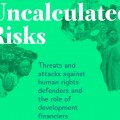 Development financiers fuel human rights abuses – New Report
Development financiers fuel human rights abuses – New Report
 StopEACOP Coalition warns TotalEnergies and CNOOC investors of escalating ‘financial and reputational’ Risks
StopEACOP Coalition warns TotalEnergies and CNOOC investors of escalating ‘financial and reputational’ Risks
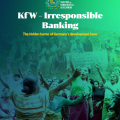 A German Bank is under intense scrutiny for its irresponsible banking practices, which have been directly linked to displacement and human rights abuses.
A German Bank is under intense scrutiny for its irresponsible banking practices, which have been directly linked to displacement and human rights abuses.
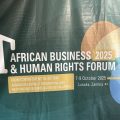 The 4th African Forum on Business and Human Rights: The rapidly escalating investment in Africa is urgently eroding environmental conservation and disregarding the dignity, the land, and human rights of the African people.
The 4th African Forum on Business and Human Rights: The rapidly escalating investment in Africa is urgently eroding environmental conservation and disregarding the dignity, the land, and human rights of the African people.

Discover How Foreign Interests and Resource Extraction Continue to Drive Congo’s Crisis

Seed Sovereignty: Most existing and emerging laws and policies on seeds are endangering seed saving and conservation on the African continent.

Lands ministry rejects call to save over 300 Masaka residents facing eviction

Report reveals ongoing Human Rights Abuses and environmental destruction by the Chinese oil company CNOOC

StopEACOP Coalition warns TotalEnergies and CNOOC investors of escalating ‘financial and reputational’ Risks

Oil palm tree growing in Uganda: The National Oil Palm Project is threatening to evict hundreds of smallholder farmers to expand its operations.

New! The Eyes on a Just Energy Transition in Africa Program is now live on Witness Radio.

Failed US-Brokered “Peace” Deal Was Never About Peace in DRC

Innovative Finance from Canada projects positive impact on local communities.
Over 5000 Indigenous Communities evicted in Kiryandongo District
Petition To Land Inquiry Commission Over Human Rights In Kiryandongo District
Invisible victims of Uganda Land Grabs
Resource Center
- REPARATORY AND CLIMATE JUSTICE MUST BE AT THE CORE OF COP30, SAY GLOBAL LEADERS AND MOVEMENTS
- LAND GRABS AT GUNPOINT REPORT IN KIRYANDONGO DISTRICT
- THOSE OIL LIARS! THEY DESTROYED MY BUSINESS!
- RESEARCH BRIEF -TOURISM POTENTIAL OF GREATER MASAKA -MARCH 2025
- The Mouila Declaration of the Informal Alliance against the Expansion of Industrial Monocultures
- FORCED LAND EVICTIONS IN UGANDA TRENDS RIGHTS OF DEFENDERS IMPACT AND CALL FOR ACTION
- 12 KEY DEMANDS FROM CSOS TO WORLD LEADERS AT THE OPENING OF COP16 IN SAUDI ARABIA
- PRESENDIANTIAL DIRECTIVE BANNING ALL LAND EVICTIONS IN UGANDA
Legal Framework
READ BY CATEGORY
Newsletter
Trending
-
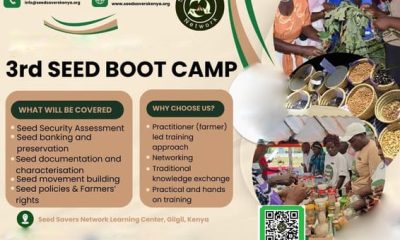
 MEDIA FOR CHANGE NETWORK2 weeks ago
MEDIA FOR CHANGE NETWORK2 weeks agoSeed Boot Camp: A struggle to conserve local and indigenous seeds from extinction.
-

 MEDIA FOR CHANGE NETWORK1 week ago
MEDIA FOR CHANGE NETWORK1 week agoReport reveals ongoing Human Rights Abuses and environmental destruction by the Chinese oil company CNOOC
-

 SPECIAL REPORTS AND PROJECTS1 week ago
SPECIAL REPORTS AND PROJECTS1 week agoThe Environmental Crisis Is a Capitalist Crisis
-
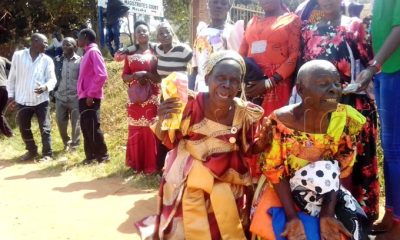
 MEDIA FOR CHANGE NETWORK1 week ago
MEDIA FOR CHANGE NETWORK1 week agoLands ministry rejects call to save over 300 Masaka residents facing eviction
-

 SPECIAL REPORTS AND PROJECTS1 week ago
SPECIAL REPORTS AND PROJECTS1 week agoGlobal use of coal hit record high in 2024
-
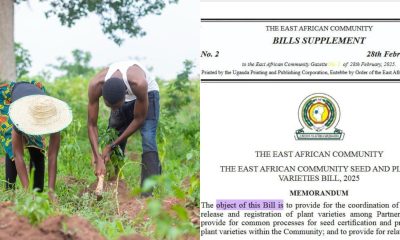
 MEDIA FOR CHANGE NETWORK2 days ago
MEDIA FOR CHANGE NETWORK2 days agoSeed Sovereignty: Most existing and emerging laws and policies on seeds are endangering seed saving and conservation on the African continent.
-
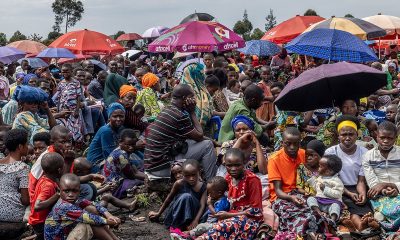
 NGO WORK20 hours ago
NGO WORK20 hours agoDiscover How Foreign Interests and Resource Extraction Continue to Drive Congo’s Crisis

